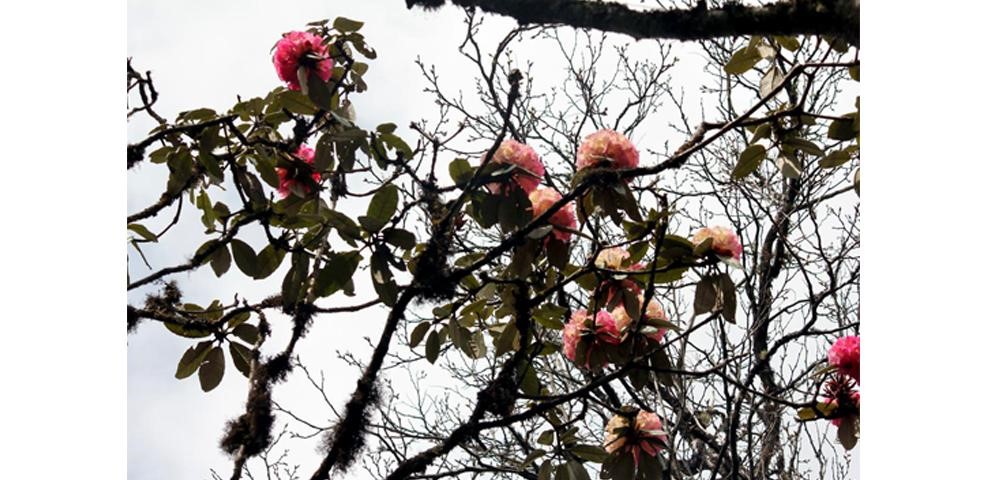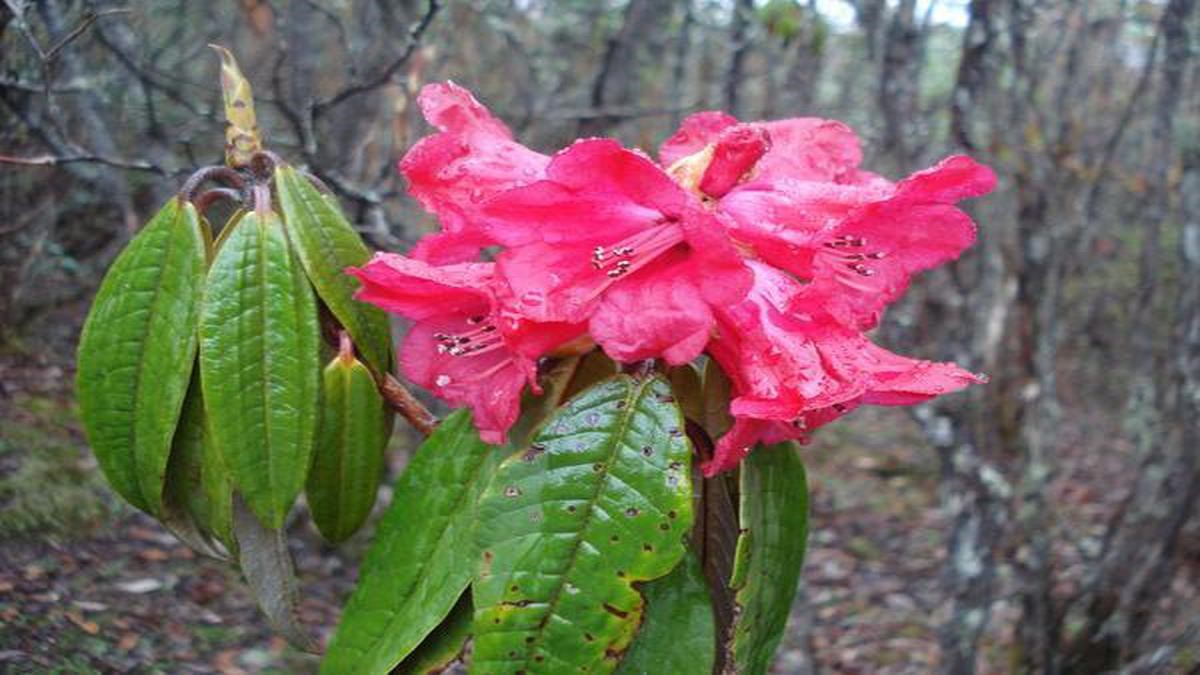Endangered Rhododendron wattii Found in Dzukou Valley
Why in the news?
A recent study highlights the endangered status of Rhododendron wattii, a rare and endemic species of Nagaland’s Dzukou Valley, threatened by habitat destruction, poor regeneration, and climate change, necessitating urgent conservation measures.
Key Characteristics:
- Endemic species found in Dzukou Valley of Nagaland and Manipur.
- A small evergreen tree growing up to 25 feet
- Renowned for its vibrant pink flowers with purplish basal blotches, blooming from February to April, with fruiting from April to December.
- First documented by Sir George Watt (1882-85) in the Japfu Hill range, Nagaland.
Pollination and Regeneration
- Flowers appear in trusses of 18-25 blooms.
- Pollinated by Fire-tailed Sunbird (Aethopyga ignicauda) and bumblebees.
- Despite numerous seed productions, natural regeneration is alarmingly low.
Threats and Conservation Measures:
- Primary threats: Poor seedling survivability, habitat destruction, and frequent wildfires.
- Deforestation and climate change further endanger its survival.
- Essential conservation efforts:
- Habitat protection
- Controlled propagation initiatives
- Wildfire management strategies
- Protecting Rhododendron wattii is critical for sustaining the biodiversity of the Eastern Himalayan ecosystem.
About Rhododendron wattii:
- Shrub or small tree growing up to 25 feet, primarily in the temperate biome.
- Endemic to Nagaland and Manipur, especially in Dzukou Valley.
- First collected by Sir George Watt (1882-85) from Japfu Hill, Nagaland.
Characteristics
- Evergreen plant with year-round leaf renewal.
- Flowering: February to April; Fruiting: April to December.
- Flowers: Pink with purplish basal blotches, in trusses of 18-25 blooms.
- Pollinators: Fire-tailed Sunbird and bumblebees.
Issues
- Low natural regeneration despite high seed production.
- Threats: Poor seedling survivability, anthropogenic activities, and wildfires.






